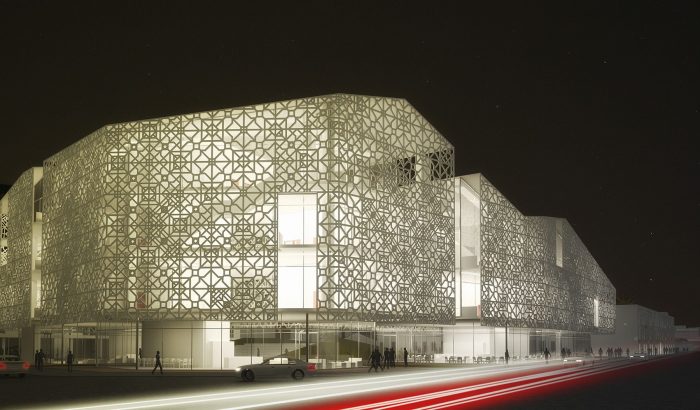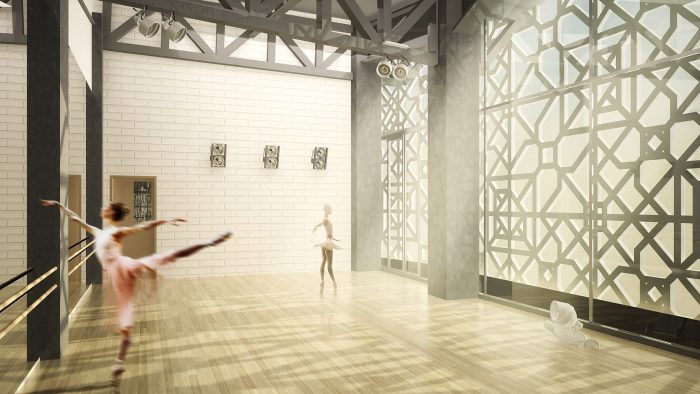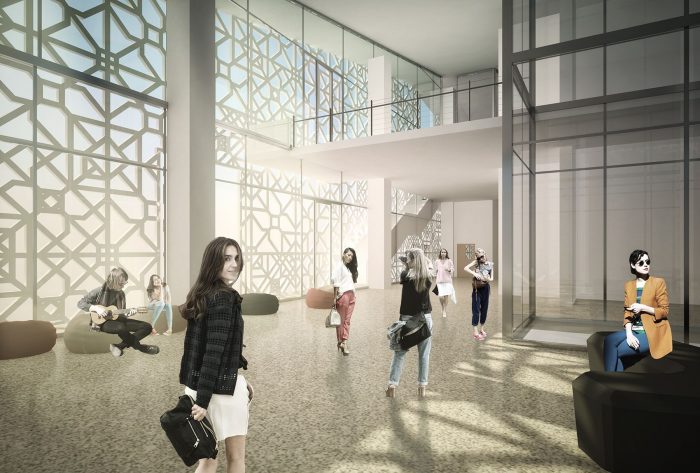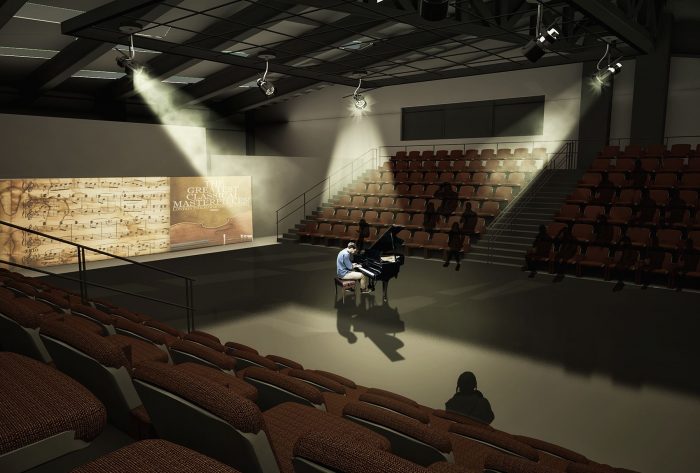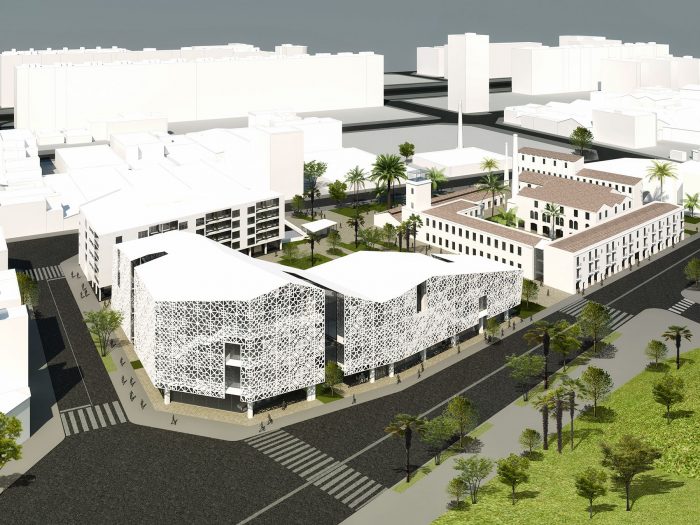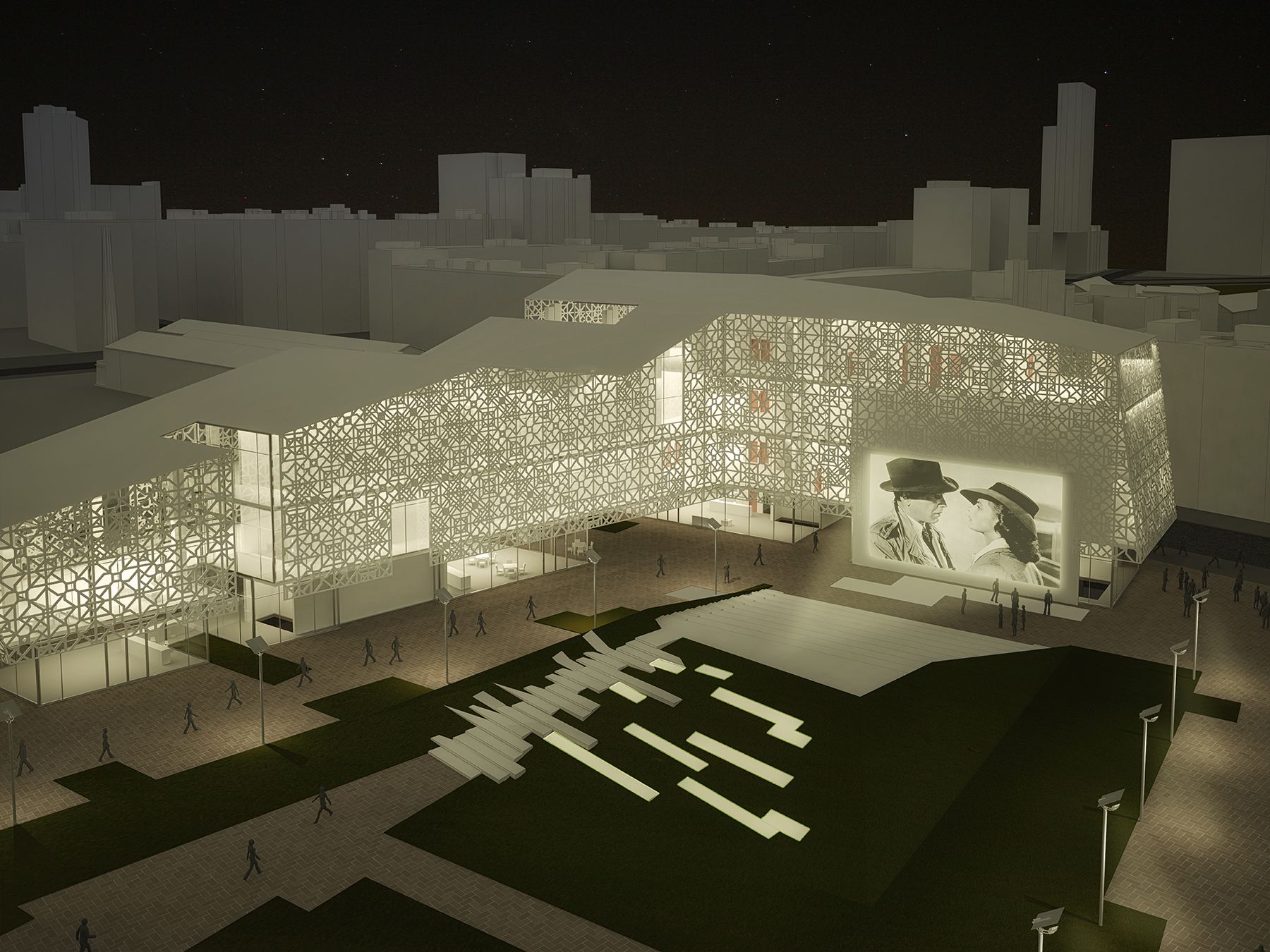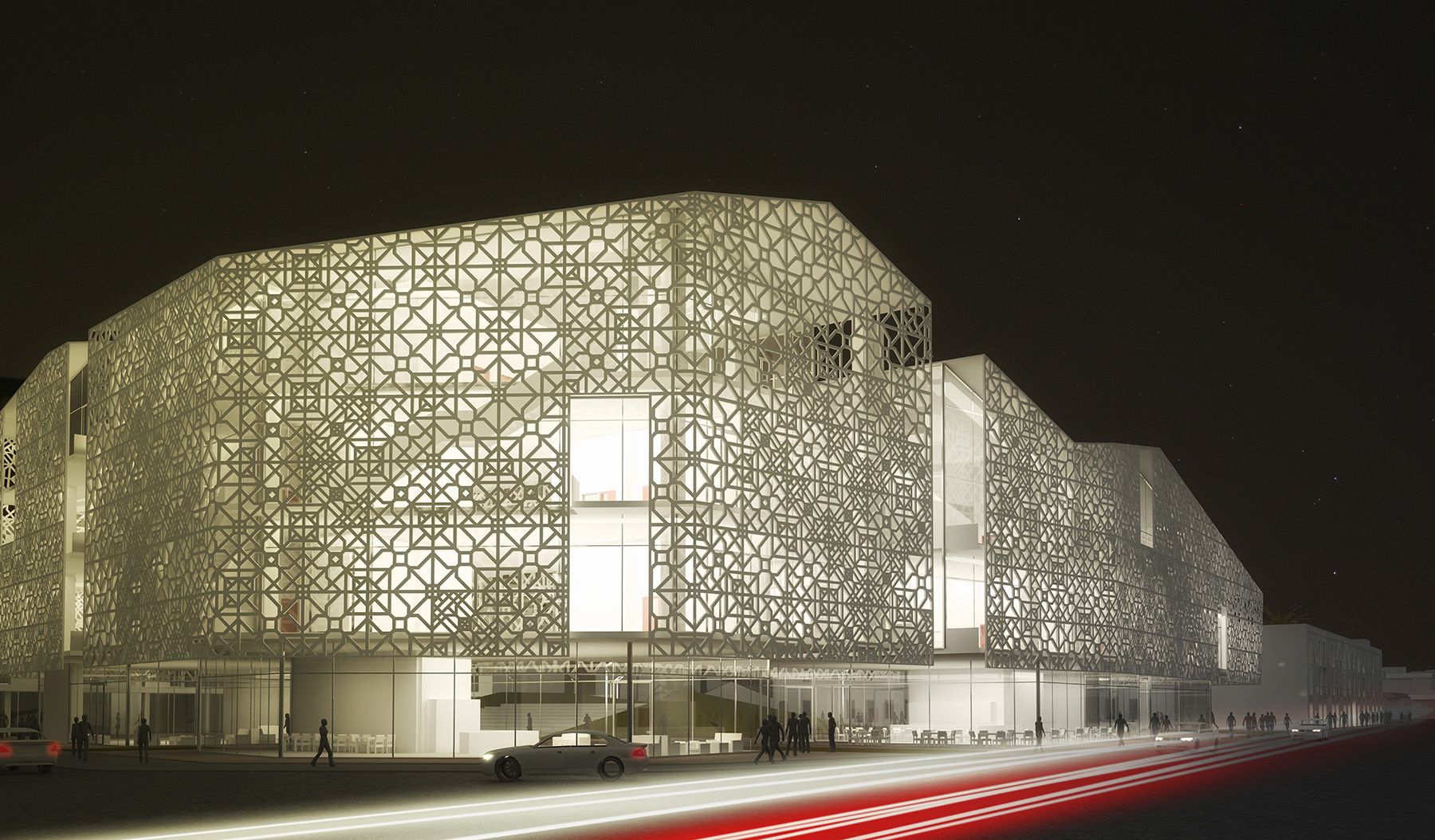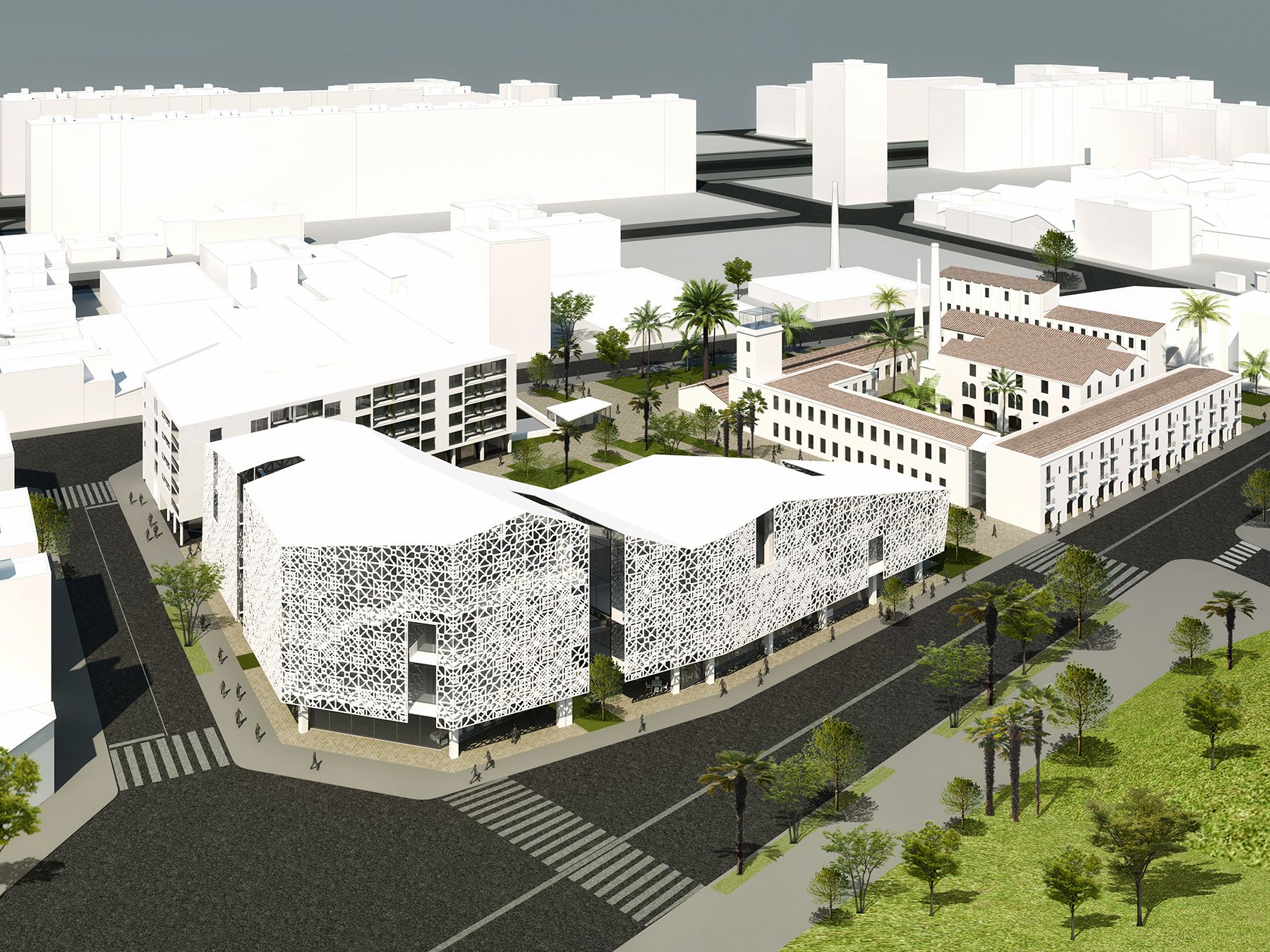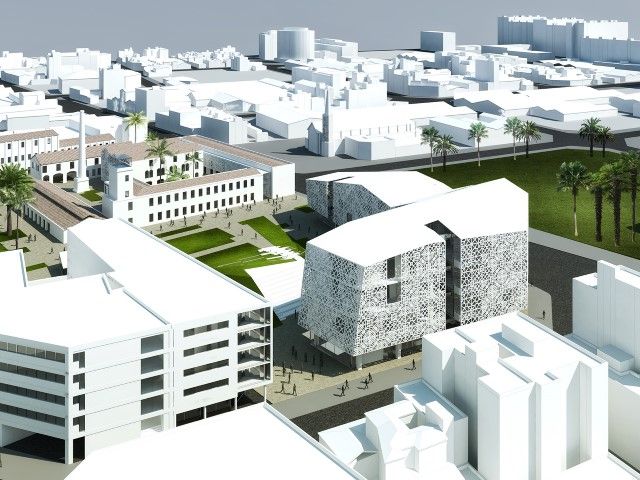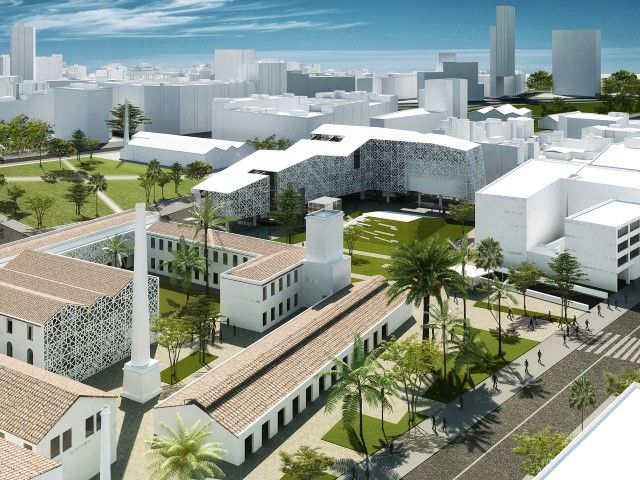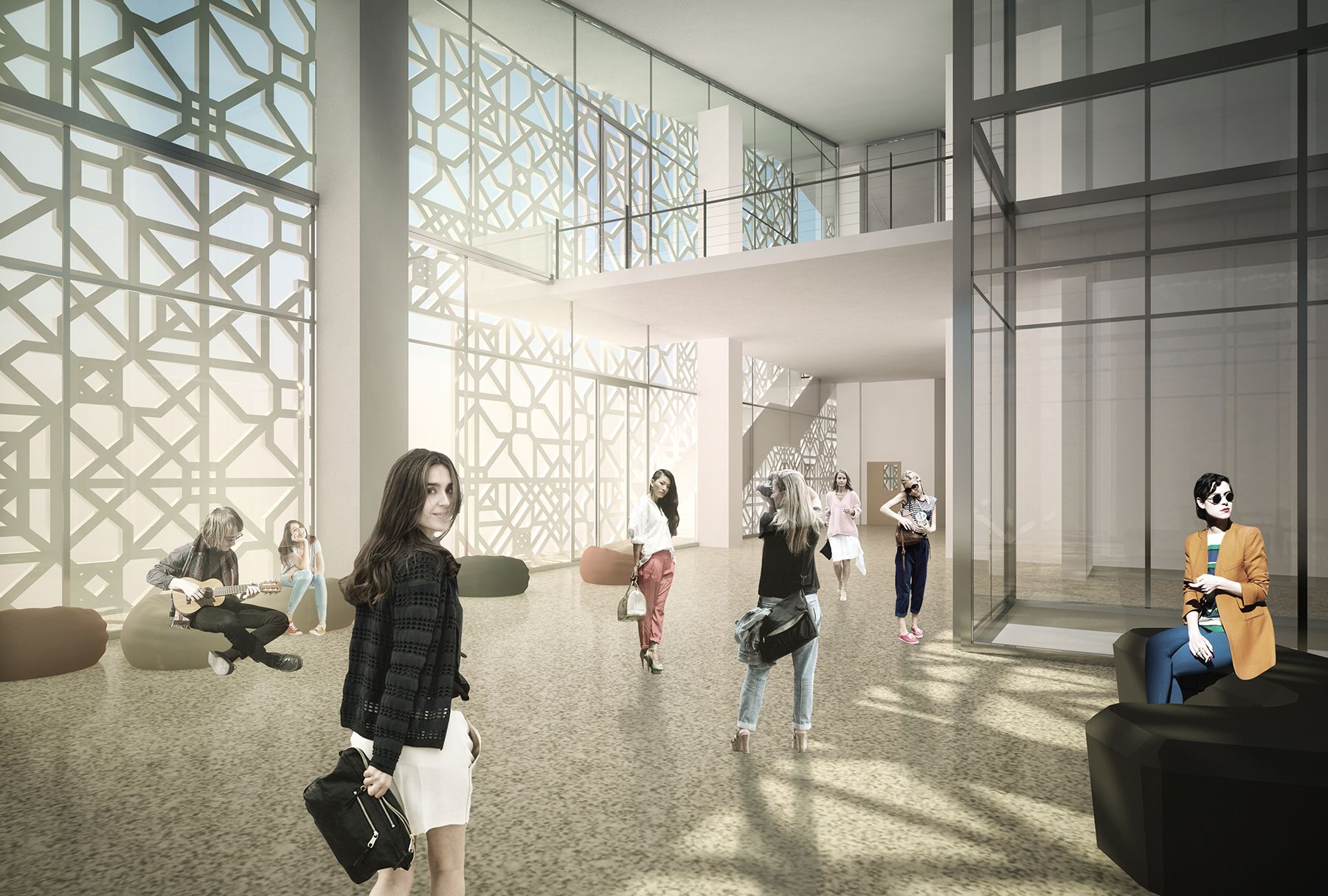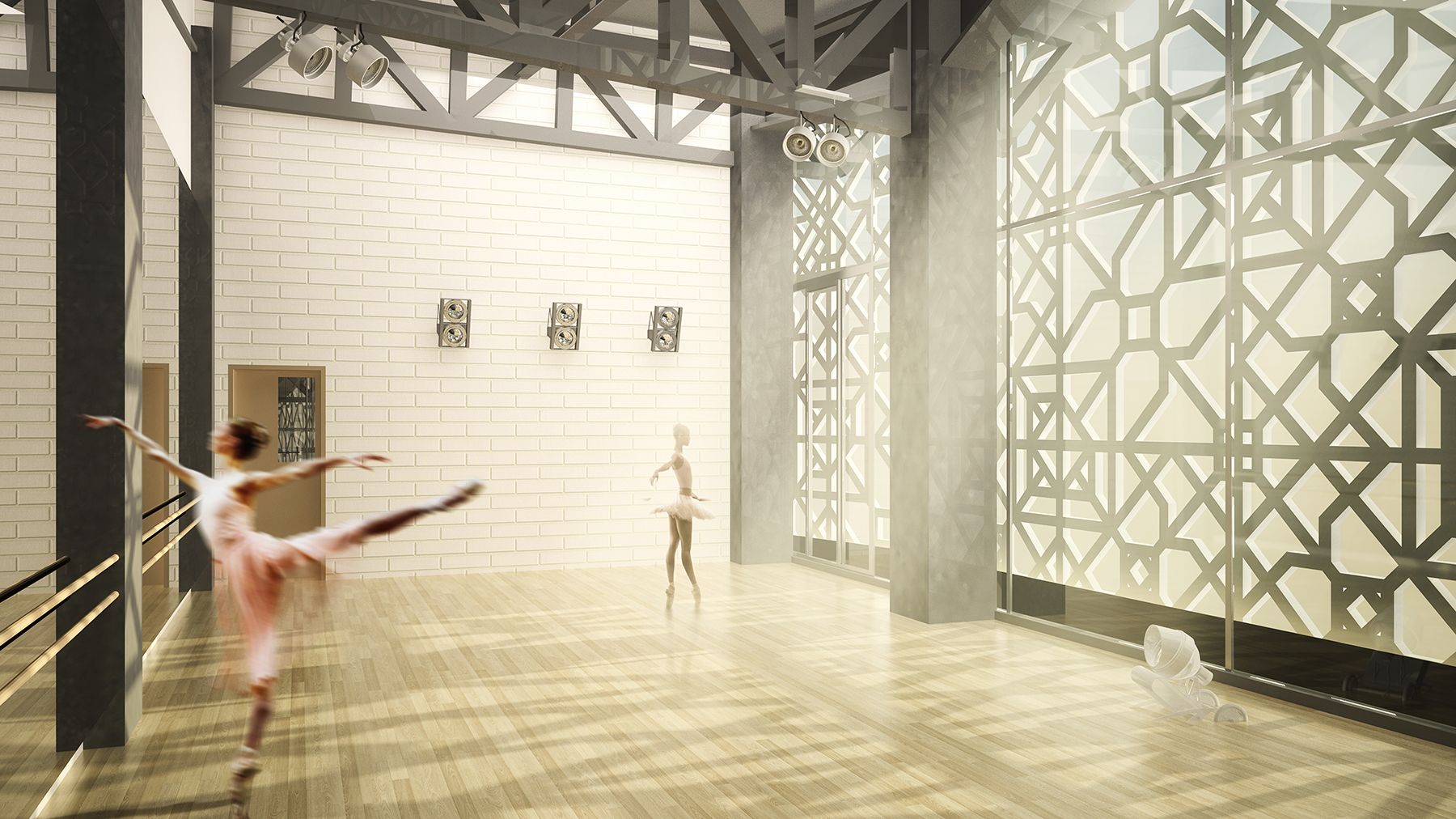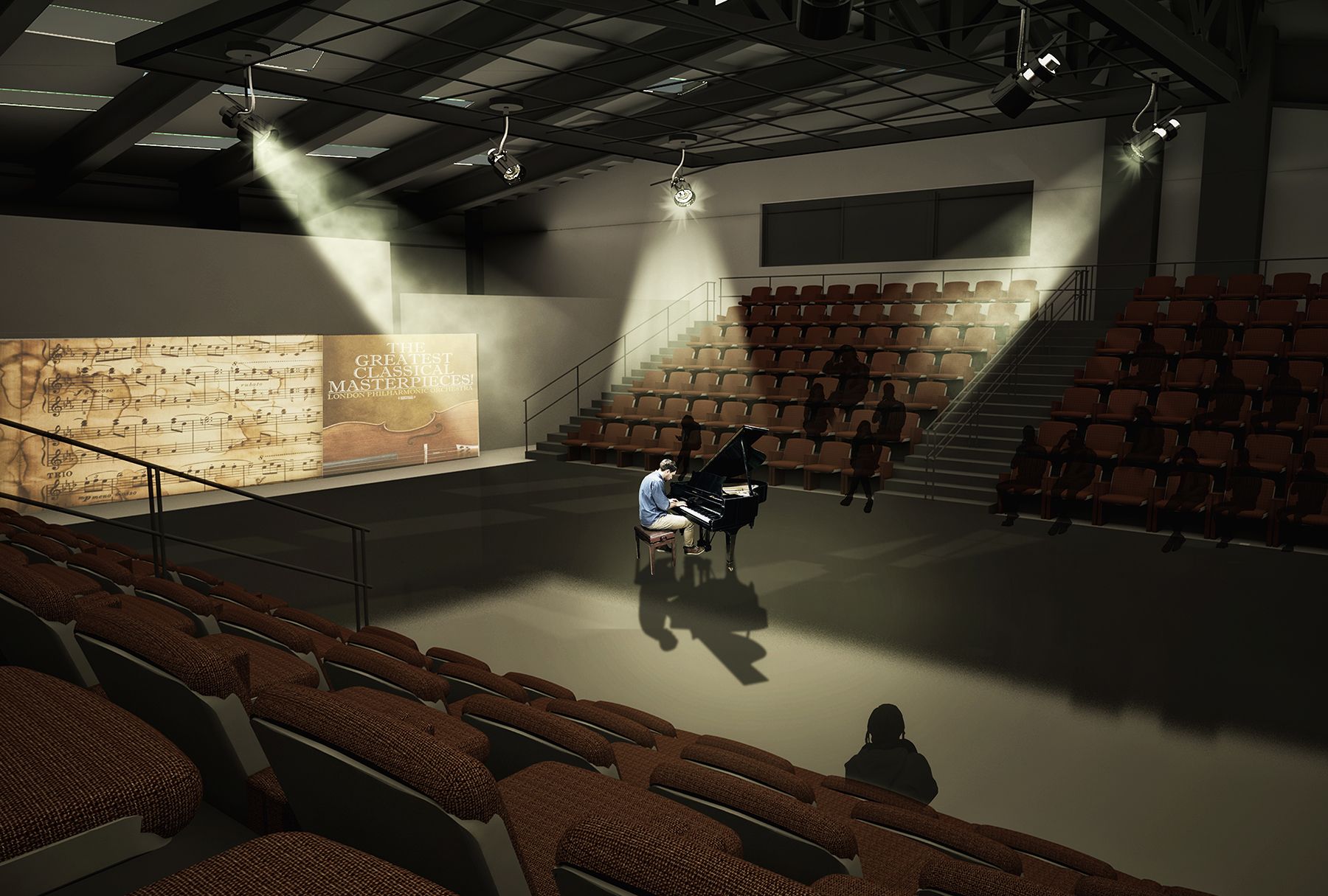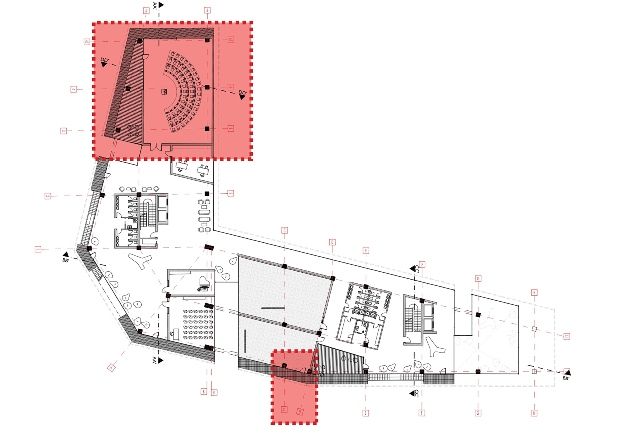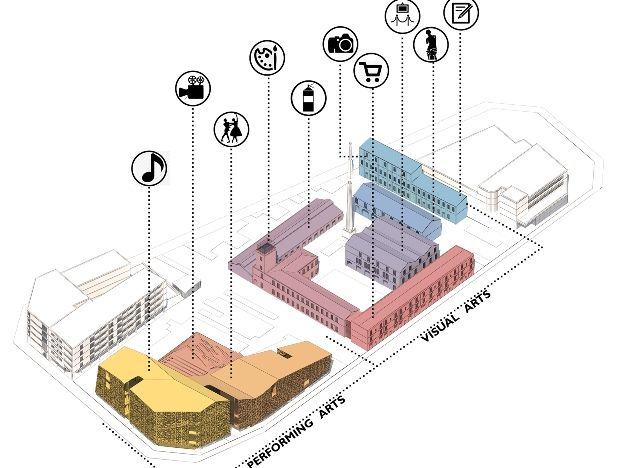The project is located in Spain, in the city of Barcelona, the Poblenou district to be more exact. Poblenou is a very interesting neighborhood due to its rich industrial history and, more recently, the 22@BCN urban regeneration program. As a result, the entire area is a collage of old abandoned factories and new contemporary architecture.
The Escocesa factory is located at the intersection of the old industrial urban tissue and the 20th century Cerda urban fabric. Built in 1845, the factory was intensely active during the industrial period but was later abandoned.

In 1999 it was transformed into a creative space an important meeting point for hundreds of artists. In 2007, as a consequence to the social pressures of the neighborhood community, the city declares the factory part of the Industrial Heritage and approves its rehabilitation plan (which never got its funding) and includes it in the Strategic Culture Plan (2006) as part of the “Factories for Artistic Creation” program.
Between 2005 and 2012, the number of artists has decreased from 70 to 10, signaling economic troubles and raising a flag concerning the future of this industrial monument.
Considering the history behind the Escocesa factory and its current situation, a regeneration process is recommended in order to surpass the functional metamorphosis which already took place 15 years ago. A revitalising impulse is necessary to generate changes throughout the entire neighbourhood. By adding an educational component which includes a larger spectre of the arts movement, a better relationship with the community is guaranteed; the community can now participate and not only observe.

It’s proposed an art centre which is distributed in two clusters: a visual arts cluster located within the factory signalling the existence of the old studios, and a performing arts cluster located in a new building which is well balanced within the surrounding industrial urban tissue.
Both clusters revolve around a specific facility which is more open to the public: the visual arts cluster develops around an exhibition gallery while the performing arts cluster concentrates around the auditorium and the above ground “theatre”
It’s proposed a three stage construction plan: 1st stage: the rehabilitation of the Escocesa Factoru; 2nd stage: the underground level and the music wing; 3rd stage: the dance and theatre wing.
In the classic style of the city, I have chosen to place my proposal on the outer limit of the existing empty lot, but creating an open plan ground floor in order to give the passers-by a more generous and inviting space.
 The proposed volume tips towards the existing residential building and towards the main façade of the factory. In order to create a dynamic interior which was well lit and shaded at the same time, I opted for a double skin façade, the outer mesh reinterpreting the geometric patterns of traditional Spanish ceramic tiles.
The proposed volume tips towards the existing residential building and towards the main façade of the factory. In order to create a dynamic interior which was well lit and shaded at the same time, I opted for a double skin façade, the outer mesh reinterpreting the geometric patterns of traditional Spanish ceramic tiles.
Project Credits
Project name: Escocesa Art Centre | Barcelona – Poblenou
Student: Cristina Neagu
School: Ion Mincu University of Architecture and Urbanism – Bucharest | Romania
Advisers: Prof.Dr.Arh. Stefan Scafa Udriste – Lect.Dr.Arh. Gabriel Costachescu
Structure adviser: Lect.Drd.Vlad Petrescu
Arch2o has received this project from our readers in order to participate in the Students week 6 event, you may submit your own work for publication in the Students Week 7 by sending it to igraduate(at)arch2o.com
courtesy of © Cristina Neagu
courtesy of © Cristina Neagu
courtesy of © Cristina Neagu
courtesy of © Cristina Neagu
courtesy of © Cristina Neagu
courtesy of © Cristina Neagu
courtesy of © Cristina Neagu
courtesy of © Cristina Neagu
plan.courtesy of © Cristina Neagu
courtesy of © Cristina Neagu


